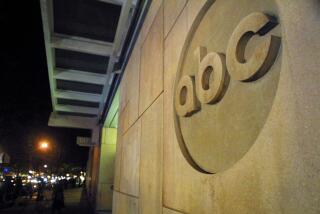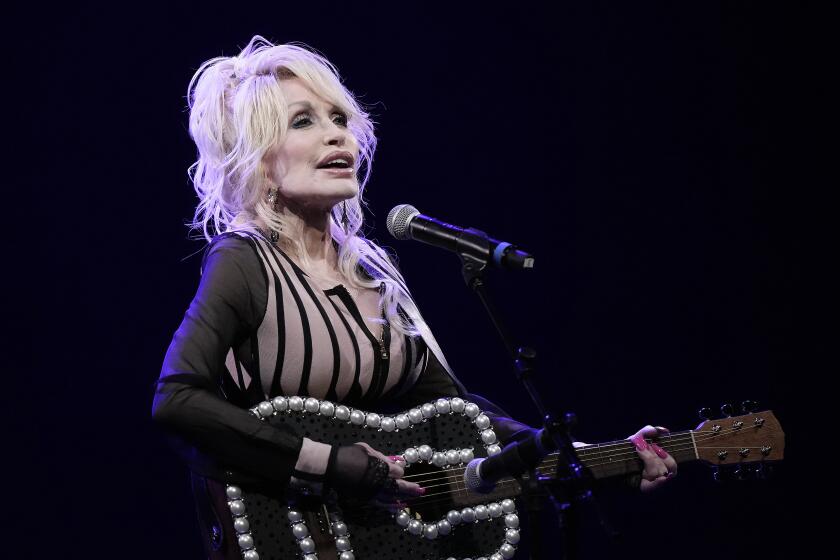Dispute Over Newspaper Chain Profit Goals Gets Public Airing
- Share via
The economy is slumping, newspaper advertising and profit projections are down, newsprint costs are up, and cutbacks in staffing and the space devoted to news are being imposed, discussed and worried about in newsrooms from coast to coast.
But while newspaper profit margins are threatened, they remain higher than margins in many other businesses. Some journalists--including Jay Harris, who quit in protest Monday as publisher of the San Jose Mercury News--worry that in their quest to satisfy Wall Street’s demand for higher margins, newspapers risk sacrificing their quality, their commitment to their communities and their long-term survival.
In his letter of resignation to top executives at Knight Ridder, the corporate parent of the Mercury News, Harris warned that meeting the company’s 2001 profit goals would “necessitate deep and ill-advised staff and expense reductions at the Mercury News [that] . . . would poorly serve our readers, our advertisers and Knight Ridder shareholders.”
On Tuesday afternoon, David Yarnold, executive editor of the Mercury News, announced to the staff that, contrary to statements and plans made earlier, there will be no layoffs in the newsroom and “no large-scale layoffs elsewhere in the building.”
Standing in the newsroom in front of the assembled staff at 3:25 p.m., he held aloft several pages of paper and said, “This is the layoff list.” Then he tore the pages in half and--to growing applause--made his “no layoffs in the newsroom” announcement.
But Yarnold also was quoted as saying the paper will fold its new San Francisco edition into another suburban edition. The Mercury News launched the edition--complete with a San Francisco nameplate--last summer to compete with the San Francisco Chronicle.
Yarnold added that Tony Ridder, CEO of Knight Ridder, told him he expects to name a successor to Harris by the end of next week.
Knight Ridder is a good barometer of the hard choices facing newspapers across the country as economic turmoil takes hold.
It has long been regarded as one of the best corporate newspaper publishers, a company that combined solid profits with solid journalism--including 82 Pulitzer Prizes, most of them over the last 25 years. The company moved its headquarters from Miami to San Jose in 1998, simultaneously taking advantage of the technology boom in the Silicon Valley and turning the Mercury News into its flagship paper. The paper expanded its newsroom staff from 376 in 1995 to 415 last year and increased its editorial budget from $20.6 million to $28.1 million in the same period.
But in his letter of resignation, Harris spoke of changes in the company in recent years that he suggested were at odds with “the first statement of company values issued during my years with Knight Ridder.”
“Much greater priority is given today to the business aspects of our enterprise than is given to fulfilling our ‘public trust,’ ” he wrote. “I fear as well that we no longer sense the same level of ‘moral obligation’ to ‘excel in all that we do’ and that our founders’ commitment to publishing ‘high quality newspapers’ is no longer the powerful drive in the company that it once was.”
Harris submitted his resignation after meeting Friday with Ridder and Steve Rossi, president of the company’s newspaper division, and after receiving a follow-up e-mail from Rossi saying that, while profit margins at the Mercury News had ranged from 22% to 29% over the last decade, “we need to move that range up in order to be in step with the goal to move KR’s overall margins up.”
The conflict between the position of Ridder and Rossi, both of whom come from the business side of the company, and Harris, a former newsman who has long had a reputation for his commitment to editorial excellence, mirrors an industrywide battle that has accelerated ever since newspaper companies became publicly traded commodities.
“Once that happened, they had to pretty much abide by the law of the market, and that generally means sacking people and cutting space when profit margins dip,” says Everett Dennis, a professor of media management at the Fordham University Graduate School of Business in New York.
“I always thought this was shortsighted,” Dennis says. “It’s pretty naive to suggest that newspaper management should accept much lower profit margins when they’re competing with other companies for the confidence of pension funds and other big investors out there, but even in a recession, profit margins are pretty decent for newspapers, and one would think that they could make cuts elsewhere and preserve the editorial quality that’s so important to their long-term survival.”
This year, newspaper stock prices have fallen just 7%, barely half the 13.5% decline in the average U.S. blue-chip stock, according to a key index. But the newspaper stock slippage has been gaining steam this month.
The newspaper industry’s average profit margin is 22.7%, a margin that most newspapers expect to have difficulty maintaining, faced with a 17% increase in the cost of newsprint and the soft advertising climate they’re operating in this year.
Overall newspaper advertising revenue declined 1.4% in January, when compared with January 2000, and while final industrywide figures are not yet available for February, individual reports by several major papers show that the decline has steepened considerably.
February advertising revenue at the New York Times declined 7.4% last month from a year earlier. At the Wall Street Journal--which reports only advertising volume, not revenue--advertising linage dropped 32.1% from February to February.
Both papers have taken what they describe as “judicious” steps to address this revenue shortfall.
“We had planned major investments in our Connecticut and Long Island regional weeklies, but they got squeezed out,” says Joseph Lelyveld, executive editor of the New York Times. “We’ve also cut some space from our feature sections in recent weeks, and while we don’t have a hiring freeze as such . . . the pace of hiring is much slower this year than it has been in previous years.”
In January, the paper’s parent company eliminated 69 positions--17% of the total work force--at New York Times Digital, its online news operation.
The Wall Street Journal plans to cut $55 million to $60 million in expenses companywide, including some layoffs that are expected to be announced April 12. There is no hiring freeze at the Journal, but executives there are taking what corporate spokesmen term “a hard look at every expense.”
Newspaper executives across the country echoed that approach.
“We’re trimming a little here and a little there in ways we don’t think the reader will notice,” says John Carroll, editor of the Los Angeles Times, which is owned by the Chicago-based Tribune Co. “That’s what we plan to keep doing. We’re playing this for the long haul, not the short haul.”
Some newspapers--Knight Ridder’s Philadelphia Inquirer and Kansas City Star among them--have imposed hiring freezes, but most editors say they have avoided a formal freeze and instead are carefully monitoring new hires.
Sandra Mims Rowe, editor of the Portland Oregonian, who readily acknowledged “we are not right now hiring,” said she was still “reluctant to call it a freeze.”
Some newspapers--including the Los Angeles Times, Wall Street Journal, Washington Post and New York Times--have tried to offset revenue losses with price increases. Others have tried various cost-cutting measures. In recent years, many papers--the Los Angeles Times, Washington Post, USA Today and Chicago Tribune among them--have narrowed the width of their pages to save paper.
The Akron Beacon Journal, the original paper in what would become Knight Ridder, has been among the hardest hit.
“We’ve killed our Sunday magazine and our News & Views section, cut space throughout the paper, reduced the number of editions from four to two, cut overtime, travel, wire and library services and--worst of all--we’ll lay off 10 [of 165] people in the newsroom” next month, says Jan Leach, editor of the Beacon Journal.
At other papers:
* All 370 employees at The Press of Atlantic City, N.J., will be required to take one week of unpaid leave this year.
* The Philadelphia Inquirer combined three daily suburban sections into one.
* The Dallas Morning News has trimmed news space and cut overtime, travel and freelance expenses.
Gilbert Bailon, executive editor of the Morning News, says he doesn’t expect any reductions at his paper that will undermine its quality, but “there is a real risk that if problems in the economy continue and companies don’t lower their [profit] expectations for the year, a lot of papers could be in jeopardy of cutting things that readers have traditionally expected and held dear. I worry that they’d quit reading and not come back.”
More to Read
The biggest entertainment stories
Get our big stories about Hollywood, film, television, music, arts, culture and more right in your inbox as soon as they publish.
You may occasionally receive promotional content from the Los Angeles Times.










